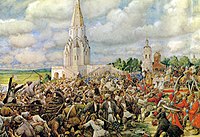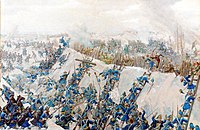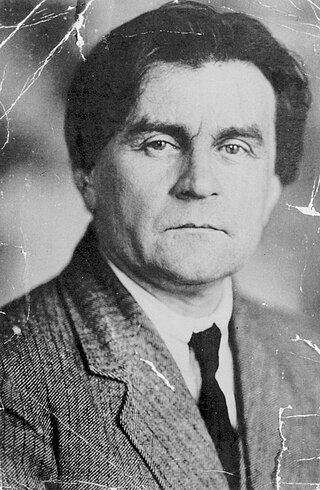
Kazimir Severinovich Malevich was a Russian avant-garde artist and art theorist, whose pioneering work and writing influenced the development of abstract art in the 20th century. He was born in Kiev, modern-day Ukraine, to an ethnic Polish family. His concept of Suprematism sought to develop a form of expression that moved as far as possible from the world of natural forms (objectivity) and subject matter in order to access "the supremacy of pure feeling" and spirituality. Active primarily in Russia, Malevich was a founder of the artists collective UNOVIS and his work has been variously associated with the Russian avant-garde and the Ukrainian avant-garde, and he was a central figure in the history of modern art in Central and Eastern Europe more broadly.

Ivan Konstantinovich Aivazovsky was a Russian Romantic painter who is considered one of the greatest masters of marine art. Baptized as Hovhannes Aivazian, he was born into an Armenian family in the Black Sea port of Feodosia in Crimea and was mostly based there.

The Russian Academy of Arts, informally known as the Saint Petersburg Academy of Arts, was an art academy in Saint Petersburg, founded in 1757 by the founder of the Imperial Moscow University Ivan Shuvalov under the name Academy of the Three Noblest Arts. Catherine the Great renamed it the Imperial Academy of Arts and commissioned a new building, completed 25 years later in 1789 by the Neva River. The academy promoted the neoclassical style and technique, and sent its promising students to European capitals for further study. Training at the academy was virtually required for artists to make successful careers.
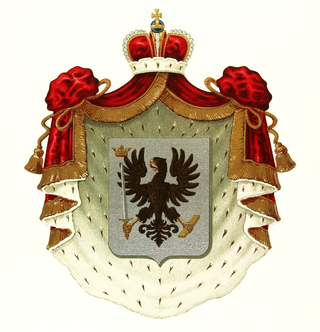
Prokopy Petrovich Lyapunov was a prominent 17th century Russian nobleman (dvoryanin), voivode of, allegedly, a Rurikid origin who practically became a head of Pereyaslavl-Ryazansky lands nobility in the end of 1590s; he took part in wars during power vacuum in succession crisis that happened in early 1598 in Tsardom as result of confusion about legitimate heir apparent following death of Feodor I, nobility infighting, war declared by Polish–Lithuanian Commonwealth (PLC) in 1605, and exhaustive Tatar raids; most famously he is remembered for organizing and leading the first unsuccessful uprising against occupation of Moscow of 1610 by PLC in April of 1611.
Soviet nonconformist art was Soviet art produced in the former Soviet Union outside the control of the Soviet state started in the Stalinist era, in particular, outside of the rubric of Socialist Realism. Other terms used to refer to this phenomenon are Soviet counterculture, "underground art" or "unofficial art".
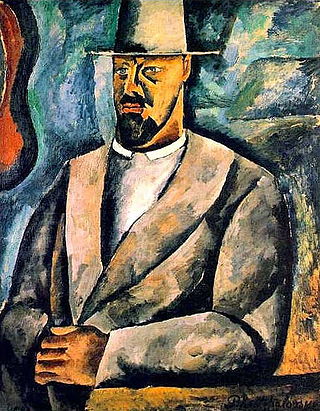
Pyotr or Petr Petrovich Konchalovsky was a Russian and Soviet painter. He was a member of the Knave of Diamonds group.

Isaak Izrailevich Brodsky was a Russian painter and draughtsman of Jewish descent best known for his portrayals of Vladimir Lenin and other Soviet leaders, renowned as blueprint examples of the Socialist realist style.

Alexandre Yevgenievich Jacovleff was a neoclassicist painter, draughtsman, designer and etcher.

Yuri Mikhailovich Neprintsev was a Soviet and Russian painter, graphic artist, art teacher, professor of the Repin Institute of Arts, and a member of the Academy of Arts of the USSR. He is regarded by art historian Sergei V. Ivanov as one of the brightest representatives of the Leningrad School of Painting, most famous for his genre and battle paintings.
The year 1987 was marked by many events that left an imprint on the history of Soviet and Russian Fine Arts.
The year 1922 was marked by many events that left an imprint on the history of Soviet and Russian Fine Arts.
The year 1924 was marked by many events that left an imprint on the history of Soviet and Russian Fine Arts.
The year 1925 was marked by many events that left an imprint on the history of Soviet and Russian Fine Arts.

The year 1927 was marked by many events that left an imprint on the history of Soviet and Russian Fine Arts.
The year 1928 was marked by many events that left an imprint on the history of Soviet and Russian Fine Arts.
The year 1935 was marked by many events that left an imprint on the history of Soviet and Russian Fine Arts.

The year 1937 was marked by many events that left an imprint on the history of Soviet and Russian Fine Arts.
Mikhail Ivanovich Avilov was a Russian and Soviet painter and art educator, who lived and worked in Leningrad, a member of the Leningrad Union of Soviet Artists, professor of the Repin Institute of Arts, Stalin Prize winner, People's Artist of the Russian Federation, regarded as one of the brightest representatives of Soviet Art, who played an important role in the formation of the Leningrad School of Painting. He is mostly known for his battle paintings.
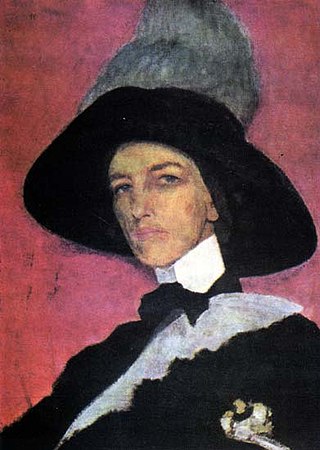
Elizaveta Sergeyevna Kruglikova was a Russian-Soviet painter, etcher, silhouettist and monotypist.
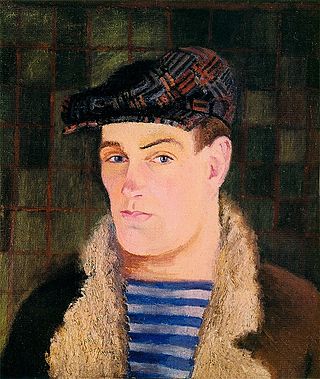
Sergey Ivanovich Markin — Moscow professional artist, painter and artist-decorator of the TRAM Theater. Master of urban landscape and narrative compositions conveying the spirit of the pre-war era. He was a member of the Pleiades of Artists of the 1920s-1930s. He worked in the Moscow Union of Artists (MOSSH). He died in battles near Moscow in the first year of the Great Patriotic War.



